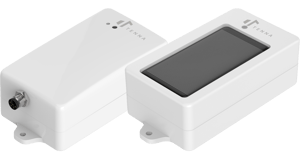
Simply put, GPS tracking for heavy equipment is a process by which you to track the location of your heavy equipment using a hardware device that reports GPS position (and in some cases, other telematic data) to a central software platform, typically using cellular technology.
Many people default to “GPS tracking” when thinking of equipment tracking, but there is more to it than you may initially think. Especially when it comes to heavy construction equipment.
GPS Tracking Devices for Heavy Equipment

At a fundamental level, you do need to have GPS equipment tracking devices for heavy equipment as a best solution for your location tracking use case, but obviously, there is much more to know about a piece of heavy machinery than just where it is.
You can learn more about your equipment leveraging GPS trackers depending on the tracker itself and the software system that tracker communicates with.
When they are built for construction equipment and environments, today’s heavy equipment GPS tracking devices typically come in multiple forms and models such as a battery or solar powered cellular GPS tracker. These trackers are more durable and able to withstand broad temperature and environmental extremes. Not only do the GPS trackers allow you to track location, they can track other telematic information as well, including key telematics data such as operational and performance indicators that tell you how your machines are being used, in addition to just where they are used. This information contributes to the overall management of your equipment, beyond just the tracking.
Read on for more details on GPS trackers themselves before we get more into tracking benefits.
Types of GPS Tracking Devices for Heavy Equipment
There are other types of technologies that can be used to track your heavy equipment, but GPS is indeed usually your best bet. Below is a breakdown of optimal GPS tracking devices for heavy equipment:
 Battery powered: A battery powered GPS tracker transmits a GPS position ping for location monitoring every 23 hours. Some can be configured more often, but this could impact the battery life. These trackers are typically not rechargeable but have a long battery life of typically 7 years.
Battery powered: A battery powered GPS tracker transmits a GPS position ping for location monitoring every 23 hours. Some can be configured more often, but this could impact the battery life. These trackers are typically not rechargeable but have a long battery life of typically 7 years. - Solar powered: Similar to the battery, a solar operated GPS tracker transmits a GPS position ping for a location update every 23 hours. These can also be configured to ping more frequently, however unlike the battery, the solar powered tracker is recharged with the sun for an indefinite battery life. Some can be configured to ping when it detects vibration, which could indicate that the asset is running or being moved.
- Plug-in: The most advanced tracker, which plugs into the engine of the machine to read critical engine data including hours, fault codes, fuel consumption and more. These trackers send location pings every two minutes when the machine is running (engine on). When not running, these trackers send a location ping every 23 hours, operating similar to the solar and battery options to make sure location is always monitored.
Two important things to consider when shopping around for these trackers
- The only GPS trackers you want to consider are those that are built with a durable casing that can withstand harsh weather conditions and rough environments that construction equipment lives and works in. Trust us, we can’t tell you how many times we’ve seen a box of trackers under a contractor’s desk in the trailer because they didn’t hold up in the field and were ripped off in frustration. Construction equipment gets knocked around, so make sure to check out the durability ratings. Here is a what makes a tracker rugged resource explaining in more detail what to look for on this front.
- Evaluate the platform that accompanies the GPS tracker to make sure it has an app that allows for remote heavy equipment monitoring. There are technologies that are more reliable for low-service areas that can be common on remote jobsites. Tracker technology still has a little bit further to go (think further development in satellite in the future) before you can monitor remote assets and jobsites perfectly, but a number of strides have been made to bridge this gap and ensure tracker data can be reliably transmitted to your software platform in areas of poor service.
Additional Benefits of GPS Tracking
Owning heavy equipment to complete your construction projects with is a big investment, so it is important to have a foolproof equipment management system in place. GPS tracking gives you visibility over where your heavy equipment is located across multiple projects and locations, in one central platform which can be accessed by your entire team by phone or computer. This makes project planning easier and results in better time management.
Not only can heavy equipment GPS trackers give you location data, but they also automatically collect telematics such as hours, miles and maintenance data in real-time. This gives you control over your equipment fleet and enables you to make smarter decisions around your operations based on that data.
If you dig deeper in the GPS tracking report data, it can help determine cost saving measures like whether or not assets are being utilized to their fullest potential. This enables better inventory control and buy/move/rent decisions. Overall you find more efficiency and value from your most important machinery with GPS tracking and the equipment management considerations it supports.
To learn more about how construction equipment GPS tracking can help you manage your heavy equipment across multiple projects and locations, check out our GPS technology guide or speak with one of our experts to get your questions answered.
About Jose Cueva
As Chief Product Officer and Co-Founder, Jose applies his first-hand construction experience and knowledge to deliver innovative platform solutions to a growing number of companies. His involvement in both architecting construction-specific solutions and delivering them enables him to cross over functional roles.
